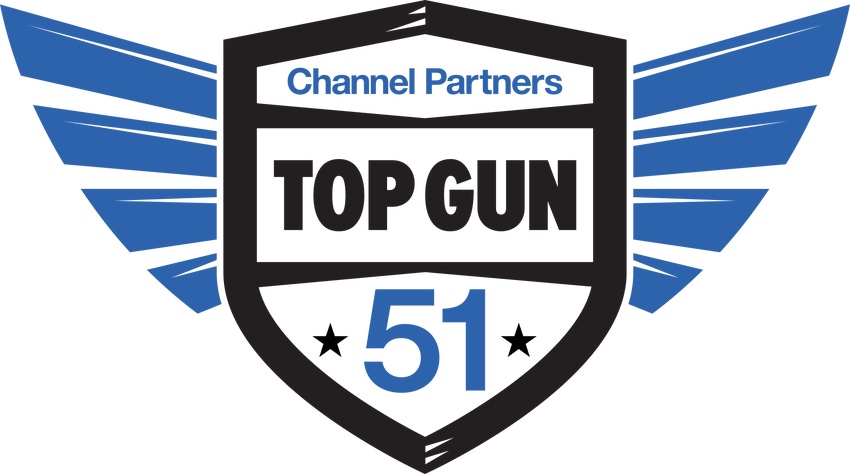HPE's Paul Hunter delivers partner empathy and a go-to mentality.
September 18, 2019

You might think that being a 17-year veteran at HPE would give Paul Hunter, the vendor’s global channel chief, a major leg up on the role he’s been in for almost two years. Not really.
That’s because Hunter stepped into the channel chief role just as CEO Meg Whitman was stepping down and new CEO Antonio Neri took the helm at what Hunter sees as a new HPE beginning on Nov. 1, 2017. With that new beginning, he also charted a new course for HPE’s partner organization.
In fact, Hunter was nominated as a Top Gun 51 award recipient for revamping the partner go-to-market strategy by focusing on partner intimacy, partner experience and partner empathy. In a tough competitive landscape, HPE must continue to maintain loyalty and deliver solutions for customer. Hunter has set his organization on a course that should help partners and customers transform in the as-a-service era.

HPE’s Paul Hunter
Hunter shared his thoughts with Channel Futures about being a next gen channel chief.
Channel Futures: What attributes do you think next gen channel leaders must have?
Paul Hunter: I think there are quite a few attributes for the leaders of our partner sales organization. I think it’s good to have a healthy connection with our customers, so having had experience selling in the company you’re representing is very helpful because it gives you perspective on what it’s like for our partners — a view on where and how partners add value in a variety of ways. I also think that being rooted in the customer gives a great sense of the challenges that exist and the complexities of certain customers, which are rapidly evolving from how it was 20 years ago.
It’s also necessary to have some fortitude and judgment because not everything that partners want us to do is necessarily the right thing for us to do. If you did everything that partners want you to do, across the whole partner base, you’d end up fragmented and doing too many things without depth. I find it helpful to focus on doing a few things and doing those few things really well so. Partners are very different – in scale, in expertise, in geography, in specializations – so, forming a point of view about what to do with whom, where and what’s the priority, is very important. There’s never a day when we think our job is done.
A third attribute is having a curiosity and thirst for wanting to hear how we can be better and do better. I like to think that we’re a humble company and with that humility comes the curiosity in wanting to understand how we can be better. We continue to strive to be a better company and to be a better partner to our partners. I like to think of it has striking a balance between humility and confidence. We want our partners to invest in us. We want our partners to believe that we’re going to win in the long-term — we believe that. They’re trusting their investments and business to vendors like us.
CF: Describe how as a channel leader you use your knowledge and experience to set a course for your partners.
PH: As a leader for the partner business, I know that we need go together — our own organization and with our partners. I think we’re a little bit like a fly fisherman trying to put the bait at a distance that’s close enough to the partner and our internal teams so that they want to follow us, but not so far away that they’re disinterested, particularly how it relates to our as-a-service leadership.
There are two things required to do that — the first thing, we’ve been in the as-a-service and consumption market for eight years now and we’re iterating on it. And, let’s face it, the first two iterations of that program weren’t …
… attractive to partners. We launched a new program last year and now we have close to 40% of our consumption funnel originated by partners — that’s up from less than 5% previously. That required that we reiterate, which was successful, and we’ll continue to evolve it because we don’t believe that it’s the end product. We’re looking to scale it and we need to bring our own teams with us and our partners.
CF: How do you become a channel champion within HPE?
PH: I don’t think a channel champion is something you are or aren’t. I have a strong belief that partners have significant value to add to our company and to our customers — they serve a vital job. They turn what we do, which is essentially horizontal services and technology solutions, into something that’s very specific for a customer and their market. I see partners as an integral part of our company. (Over 70% of HPE revenue is driven through partners.)
We recently unveiled our “Top Gun 51,” a list of today’s channel executives who deserve recognition for building and executing programs in a way that drives partner, customer and supplier success. |
Everyone at HPE knows how big a part of our business our partner business is and how important partners are. I don’t have to defend the partner’s role. The business units, and business unit leaders who own the [profit and loss], are all intimately aware of that and if they get that wrong their business suffers. And when they get it right their business prospers. We encourage all executives in the company to have strong partner relationships and we look to make them executive sponsors in every function. One of our strong executive sponsors is our general legal counsel — he’s got a very deep knowledge and insight into what it is to be a partner owner and leader and what it takes to make them successful. And that’s great for us because when we’re coming to simplify the contracts for our partners, our general legal counsel knows what our partners do, knows the value they bring, is deeply intimate with them, and he can put himself into the shoes of our partners.
I don’t think I have to defend the partner mindshare within our company. There are occasions when we need to be reminded that simplicity is key, and sometimes it’s difficult to [purge] the complexity of what we’re doing with our partners in a consistent manner. I’m trying to protect principle of keeping business with partners simple, because simplicity is key to landing what we what to land and prioritizing what we want to land.
CF: Name the top three challenges for next-gen channel leaders?
PH: One of the biggest challenges is leading partners through the evolutionary changes in consumption. That’s going to be a challenge for every company that …
… isn’t built to lead with consumption. Another challenge is sorting the wheat from the chaff and staying focused on the priorities you think are going to be the most impactful and not be distracted by the background noise. The last is moving quickly — are you moving quickly enough?
CF: Every channel leader that I’ve talked to encounters surprises in the job. In your almost two years as global channel chief, what has surprised you?
PH: One of my favorite questions to ask partners is about a recent customer transformation they’ve been working on. Some of the scale, sophistication and reach of our partners, while being small organizations, is incredibly amazing to me. A recent example is a relatively small HPE partner, about $20 million [in revenue], not the half-billion-dollar partner we have elsewhere, and this partner is working on a project that’s $150 million in size, is at the leading edge of adoption of insight at the edge, is a global project that includes some of their own intellectual property and, frankly speaking, I had no idea.
That’s one of my favorite questions [to ask] now and it’s a very simple question — so, you think, well why wouldn’t you ask it? Well, when you’re meeting partners you get into the nuts and bolts of how their business is doing and what could we do better? But asking about a recent transformation project, I’m getting amazing stories and it’s led into a new Partner Hero program which shines a light on the transformations our partners are working on.
Vendors like to think of themselves as the ones who are driving the most ambitious projects with the most ambitious change right at the leading edge of their portfolio, but I think that our partners are equal to us in capability, having even greater access to those leading-edge projects. In many instances they’re working with smaller customers that are far more apt to adopt the leading-edge technologies.
About the Author(s)
You May Also Like


